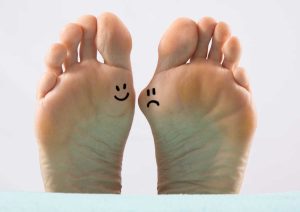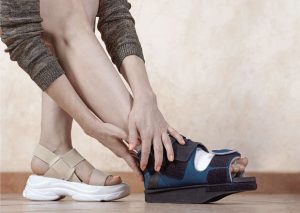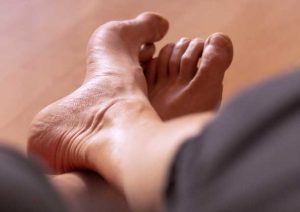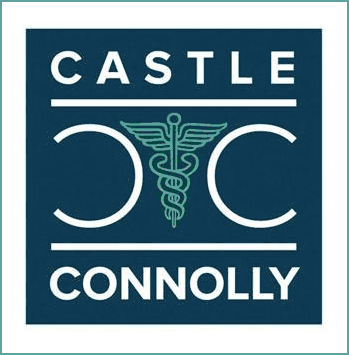
Sprained Ankle Still Hurts After 2 Weeks?
This article is for active adults, athletes, or anyone recovering from an ankle injury who’s wondering why their sprain still hurts weeks later.

This article is for active adults, athletes, or anyone recovering from an ankle injury who’s wondering why their sprain still hurts weeks later.

Learn how carrying extra weight impacts your bones, joints, and mobility. Discover expert tips and treatments from OrthoConnecticut for better joint health!

Are you grappling with the discomfort and inconvenience of bunions? If so, you’re not alone. Bunions, those bony bumps that develop at the base of the big toe, can cause pain and difficulty with everyday activities. Fortunately, surgical options are available to correct them if non-surgical options have not relieved the pain and discomfort. But with many procedures to choose from, how do you decide which one is best for you? The Many Approaches to Bunion Correction There are numerous approaches to bunion surgery, each with its own benefits and considerations. Traditional techniques such as Bunionectomy, Osteotomy, Lapidus, Arthrodesis, and the newer Lapiplasty procedures are staples in treating bunions, offering effective solutions for many patients. However, in recent years, a minimally invasive option has been gaining popularity—Minimally Invasive Surgery (MIS) for Bunion Correction. The Advantages of Minimally Invasive Bunion Surgery MIS Bunion Surgery offers several advantages over traditional methods. With smaller incisions and specialized instruments, this approach minimizes tissue damage, reduces postoperative pain, and accelerates recovery times. Patients often experience less scarring and a quicker return to normal activities, making it an appealing choice for busy and active people. Lapiplasty as an Alternative Procedure In recent years, the heavily marketed Lapiplasty procedure has been gaining attention. Lapiplasty may be recommended for patients with more severe deformities as it addresses the three-dimensional deformity of bunions by realigning the metatarsal bone at the base of the big toe. It is a more invasive technique and typically requires a longer recovery period than minimally invasive surgery and greater scarring at the location of the incision. Dr. Sealey Performs the Minimally Invasive Bunion Surgical Technique OrthoConnecticut Foot and Ankle specialist Dr. Randolph Sealey, renowned for his expertise in lower extremity surgery, strongly prefers the MIS approach when treating bunions. With years of experience and a

Medically reviewed by Dr. Michael Brand The rapid rise of pickleball, a fast-paced and exhilarating sport, has been remarkable. With its blend of tennis, badminton, and ping-pong, pickleball offers a unique avenue for recreation, athletics, and competition. However, like any physical activity, it comes with its share of risks, especially concerning bone, joint, and musculoskeletal injuries. Our orthopedic professionals recommend proper injury prevention techniques and treatment to avoid injury and maintain optimal health. The Most Common Pickleball Injuries Despite its relatively low-impact nature compared to other sports, pickleball can still lead to injuries, particularly in the joints and muscles. Common pickleball injuries include: Orthopedic Treatment for Pickleball Injuries Prompt evaluation and treatment are crucial for addressing pickleball-related injuries effectively. Orthopedic specialists play a pivotal role in diagnosing and managing these conditions. Here’s what patients can expect during their orthopedic care: Returning to Pickleball Safely: While the desire to return to the court may be strong, it’s essential to prioritize a gradual and controlled comeback. Light drills and gradually increasing intensity can help assess readiness and prevent re-injury. Communicating with your orthopedic physician or physical therapist allows for ongoing progress monitoring and adjustment of treatment plans as needed. Injury Prevention: What Doctors Wish People Knew About Preventing Pickleball Injuries Orthopedic doctors play a crucial role in treating pickleball injuries, and they often have valuable insights into preventing these injuries from occurring in the first place. Here are some key points that doctors wish people knew about preventing pickleball injuries: 1. Warm-Up Properly Doctors emphasize the significance of warming up before engaging in pickleball or any physical activity. A proper warm-up routine helps increase blood flow to the muscles, improve flexibility, and prepare the body for gameplay demands. Dynamic stretching, light cardio exercises, and joint mobilization techniques are essential to a good

Medically reviewed by Randolph J. Sealey, M.D.Bunions can be a real pain – both literally and figuratively. If you’ve been grappling with the discomfort of a bunion, you’re not alone. Many individuals find themselves longing for relief and a return to pain-free steps. Fortunately, advancements in medical technology offer a ray of hope, particularly in the realm of “MIS” – minimally invasive surgery for bunions. In this blog, we’ll take a closer look at how the Arthrex system, a favorite of OrthoConnecticut Foot & Ankle specialist, Dr. Randolph Sealey, is revolutionizing bunion surgery, making the journey to comfortable and pain-free feet more accessible than ever.

Psoriatic arthritis is a chronic autoimmune disease that affects millions of people worldwide. It is a type of inflammatory arthritis that causes joint pain, stiffness, and swelling, and is often accompanied by the skin condition psoriasis. Doctors help patients identify the symptoms of psoriatic arthritis. Early diagnosis and management are key and there are many treatment options to alleviate discomfort and slow disease progression. What is Psoriatic Arthritis? Psoriatic arthritis is a type of arthritis that affects people who have psoriasis, a skin condition characterized by red, scaly patches on the skin. It is an autoimmune disease, which means that the body’s immune system mistakenly attacks healthy cells and tissues, causing inflammation and damage. Psoriatic arthritis can affect any joint in the body, but it most commonly affects the joints in the fingers, wrists, knees, toes and ankles. It can also cause inflammation in the spine, leading to pain and stiffness in the neck and lower back. Symptoms of Psoriatic Arthritis The symptoms of psoriatic arthritis can vary and change over time. Some common symptoms include: Not everyone with psoriatic arthritis will have all of these symptoms. Some people may experience mild joint pain, while others may have severe joint damage and disability. Diagnosing Psoriatic Arthritis Diagnosing psoriatic arthritis can be challenging, as its symptoms can be similar to other types of arthritis, such as rheumatoid arthritis. However, there are some key differences that can help doctors make an accurate diagnosis. Firstly, psoriatic arthritis usually affects the joints on both sides of the body, while rheumatoid arthritis typically affects joints on one side of the body. Additionally, psoriatic arthritis often causes swelling in the fingers and toes, while rheumatoid arthritis does not. To diagnose psoriatic arthritis, doctors will typically perform a physical exam, review the patient’s medical history, and order

Medically reviewed by Paulina Piekarska, D.P.M. A.A.C.F.A.S. Recovering from bunionectomy surgery requires time and proper care to ensure optimal healing. Here are some top tips to help you during your recovery: 1. Follow post-operative instructions: Strictly adhere to the instructions provided to you by your surgeon or healthcare provider. This includes guidelines on wound care, dressing changes, weight-bearing restrictions, and medication usage. 2. Elevate your foot: Elevating your foot above the level of your heart helps to reduce swelling and promotes blood circulation. Aim to keep your foot elevated as much as possible, especially during the first few days after surgery. 3. Ice therapy: Applying ice packs or the use of an ice machine, on the surgical area for 15-20 minutes at a time, several times a day, can help reduce swelling and manage pain. Be sure to use a thin cloth or towel as a barrier between the ice pack/machine and your skin to avoid frostbite. 4. Pain management: Take prescribed pain medications as directed by your healthcare provider to manage post-operative pain. If allowed, over-the-counter pain relievers like acetaminophen or non-steroidal anti-inflammatory drugs (NSAIDs) can also be used, following the recommended dosage and consulting with your doctor. 5. Wear proper footwear: Your surgeon will provide recommendations for appropriate footwear during the recovery period. It is essential to wear comfortable, roomy shoes or sandals that accommodate any dressings or surgical bandages. Avoid tight-fitting or restrictive shoes that could impede healing or cause discomfort. 6. Practice gentle foot exercises: Engage in the recommended foot exercises and mobility exercises provided by your physical therapist or healthcare provider. These exercises promote circulation, prevent stiffness and aid in the recovery of normal foot function. 7. Gradual weight-bearing and mobility: Follow your orthopedic surgeon’s instructions regarding weight-bearing restrictions and the use of crutches, walkers,

Medically Reviewed by Dr. Paulina Piekarska Key Takeaways If you’ve just had surgery, compression socks might seem like a small detail, but they can make a big difference in your recovery. This guide is for post-orthopedic surgery patients looking to optimize recovery and reduce complications. Not only do compression socks improve blood circulation and reduce the risk of blood clots, but they can also help alleviate swelling and discomfort. We’ll explore exactly what compression socks are, and some of the most common questions we get relating to wearing them after surgery. Let’s dive in! What are Compression Socks? Compression socks are specialized socks that are designed to improve blood flow in the legs by applying pressure to the lower limbs. In the medical field, they are commonly used to prevent and treat various conditions such as deep vein thrombosis, edema, and varicose veins. Doctors often recommend them after surgery because they help reduce swelling, boost circulation, and lower your risk of complications. Compression socks come in a variety of styles and strengths, and should be worn as directed by a healthcare provider. Most Common Questions About Wearing Post-Surgical Compression Socks: Why do I need to wear compression socks after surgery? Compression socks are designed to help improve blood flow and circulation in the legs. They do this by applying pressure to the legs in a graduated manner, with the most pressure at the ankle and gradually decreasing up the leg. This helps to push blood and other fluids back up toward the heart, reducing the risk of blood clots and swelling in the legs. Compression socks are often used by people who spend a lot of time sitting or standing, such as travelers, office workers, and people with varicose veins or other circulation problems. They can also be helpful for

Medically reviewed by Dr. Randolph Sealey Key Takeaways If you’re dealing with toe pain that’s interfering with daily life, this guide is for you. Whether you’re a runner, a weekend athlete, or someone simply struggling to walk comfortably, we’ll help you pinpoint the cause and what to do about it. The toes contain 14 bones, as well as joints, muscles, ligaments, nerves, and blood vessels, all of which can be injured, compressed or infected. The truth is, there are a multitude of reasons why your toes may be hurting, from minor injuries to serious medical conditions. In this article, we will explore the 6 most common causes of toe pain, including arthritis, hammer toe, and neuroma, and discuss their symptoms and treatment options. We’ll also provide tips for relieving toe pain at home, as well as guidance on when to see a doctor. So, if you’re looking to learn more about the possible causes of your toe pain, read on to discover what you need to know. 6 Most Common Causes of Toe Pain 1. Broken, dislocated or sprained toes After an injury to the foot, you may notice swelling and bruising, and feel pain in one or more toes. These types of injuries can often resolve on their own with icing, pain relievers, rest and elevation. If pain and swelling persist after three days, consult a physician, particularly if the injury is in the big toe. 2. Arthritis (including Gout and Hallux Rigidus) Toe Osteoarthritis Caused by wear and tear of the cartilage in the joint, most often in the big toe, arthritis can cause pain, aching, and possibly burning. It can also lead to pain in the arch and the other toes. This can be treated with pain relievers and ice, as well as a change in footwear.

What is Cavus Foot? Medically reviewed by Dr. Randolph Sealey Our bodies come in all shapes and sizes. Even our feet vary extensively from one person to another. While babies’ feet, as cute as they are, often look quite similar to other babies’ feet, by the time we are full grown, foot structure varies enormously. While some people have very flat feet with low arches, others may have high arches, where the foot often looks as if it is pointing at all times. Cavus foot is a condition where an abnormally high arch of the foot results from an excessive amount of body weight being directed to the ball and heel of the foot. Cavus foot can be congenital or acquired, may develop at any age, and can affect one or both feet. Cavus foot may lead to foot pain and instability, and depending on the severity and degree of pain, patients may need to contact a Foot and Ankle orthopedic specialist for help. Causes of Cavus Foot This condition can be caused by a wide variety of factors, but is generally a normal variance caused by genetics. It can be present at birth and the result of an inherited structural abnormality. In many cases, however, cavus foot develops slowly – later in life – as the result of a nerve or muscular disorder. Stroke, cerebral palsy, spina bifida, Charcot-Marie-Tooth disease and other medical conditions can cause cavus foot to develop. How do I know I have Cavus Foot? The most obvious symptom of Cavus foot is a high arch that is present even when the person is standing. Because a Cavus foot results in an excessive amount of pressure in the ball of the foot and heel, the person may experience foot pain, ankle instability, and calluses on the sole

People often ask what are the differences between Podiatry and Foot and Ankle Orthopedic Surgery. Below we answer the most frequent questions we hear. Both the podiatrist and orthopedic foot and ankle specialist at OrthoConnecticut are highly qualified, board-certified doctors with different training, expertise, and focus. A podiatrist is a doctor of podiatric medicine (DPM) and treats the bones, soft tissues, and joints of the foot and ankle, as well as skin conditions and mechanics of the foot/ankle. A podiatrist may also train in certain surgical techniques. A podiatrist frequently treats conditions such as corns, calluses, blisters, heel pain and spurs, bunions, fallen arches, hammer toe, biomechanical gait issues, nail disorders, warts, chronic wounds from diabetes, and other infections. A Foot and Ankle Orthopedic Surgeon is a fellowship-trained, board-certified Doctor of Medicine (MD) who can expertly diagnose, treat, and rehab injuries and diseases of the musculoskeletal system that affect muscles, bones, ligaments, tendons, and other connective tissues of the foot and ankle. This type of surgeon also addresses musculoskeletal issues of the foot and ankle that impact the rest of the body. Conditions you might see an orthopedic foot and ankle specialist for include fractures, sprains and strains, ligament tears, arthritis, tendonitis, deformities, and complex foot and ankle trauma, dislocations, and reconstruction. A foot and ankle orthopedic surgeon performs complex surgical procedures, not performed by a podiatrist. There can be some overlap in what a podiatrist treats and what an orthopedic foot and ankle specialist treats such as the simpler conditions of sprains and strains. Both a podiatrist and orthopedic foot and ankle specialist use non-surgical techniques like bracing, injectable treatments, physical therapy, and orthotics, as well as surgical treatments as needed to get you on the road to feeling better. Is it better to see a podiatrist or orthopedist?

Should I Be Worried About Flat Feet? Story By Randolph Sealey M.D., Foot and Ankle Specialist at OrthoConnecticut. One of the most common patient consultations to my foot and ankle practice is a parent bringing their child in for evaluation of “Flat Feet.” The referrals for this common condition come from a range of sources; pediatricians, family members, coaches, shoe salesmen, dance instructors, military recruiters and worried parents.

Keeping You Moving: Foot & Ankle Fractures Story by Randolph Sealey, M.D., Foot & Ankle Surgeon, OrthoConnecticut One of the injuries that I see increase in frequency during the winter months are foot and ankle fractures. The slippery conditions can trigger a fall, which is the usual cause of these injuries. Not only do falls occur during snowstorms or ice storms, but the snow or ice that gets left behind on sidewalks and parking lots will often result in twisting injuries around the foot and ankle that can lead to fractures. Winter sports such as skiing, snowboarding, and ice skating also predispose patients to foot and ankle fractures. In fact, something called a “snowboarder’s fracture” is a specific injury that happens because of the position of the foot and ankle on a snowboard.
Call OrthoConnecticut today at 1.833.678.4628 to learn more or to schedule an appointment.
Accessibility statement
for individuals with disabilities:
We are committed to ensuring that our website and mobile applications are accessible to individuals with disabilities. Please use the blue icon in the lower right corner to access many helpful tools. If you need assistance using our website, or assistance with a document on the website, we can help you. Please contact us by email at info@myorthoct.com or by telephone at 1.833.ORTHOCT (1.833.678.4628).
1.833.ORTHOCT
(1.833.678.4628)



Accessibility statement
for individuals with disabilities:
We are committed to ensuring that our website and mobile applications are accessible to individuals with disabilities. Please use the blue icon in the lower right corner to access many helpful tools. If you need assistance using our website, or assistance with a document on the website, we can help you. Please contact us by email at info@myorthoct.com or by telephone at 1.833.ORTHOCT (1.833.678.4628).
We are committed to providing comprehensive care to Fairfield County, New Haven County, Litchfield County; New York State's Westchester, Dutchess, & Putnam Counties; and the Great Barrington region of Massachusetts.
This website provides general information about OrthoConnecticut, its practice areas and professional staff. Nothing in this website constitutes individual medical advice which may only be obtained as a result of personal consultation with a physician. Sending an e-mail to OrthoConnecticut, its physicians or office staff does not create a patient-physician relationship.
© 2025 OrthoConnecticut | Accessibility Statement | Site Map | Terms of Use | Non-Discrimination Policy | Website Design: Brandmark Studios